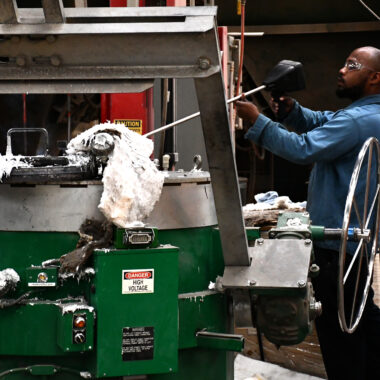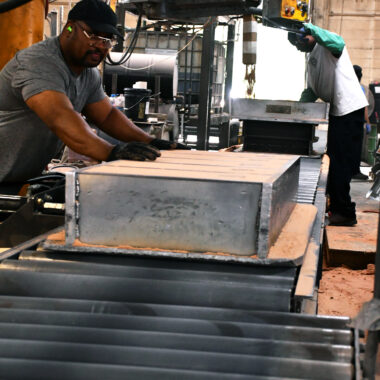Achieving Quality in Aluminum Casting: Expert Tips and Techniques
Achieving Quality in Aluminum Casting: Expert Tips and Techniques
Blog Article
Study the World of Aluminum Casting: Understanding the Various Approaches
Light weight aluminum spreading is a basic procedure in the production market, with numerous approaches used to develop exact and elaborate elements. Recognizing the different methods utilized in light weight aluminum casting can give important understandings into the capacities and limitations of each strategy. From the typical sand casting technique to the innovative die casting process, each technique provides special benefits relying on the demands of the job. Discovering these diverse methods can supply an extensive view of the opportunities within the globe of aluminum spreading and just how each technique adds to shaping the contemporary manufacturing landscape.
Sand Casting Method
Sand spreading, a widely-used approach in aluminum spreading procedures, involves producing molds made of compressed sand for pouring molten steel. When the mold is all set, it is firmly positioned in a flask and molten light weight aluminum is poured right into the tooth cavity.
After the metal has cooled down and solidified, the sand mold and mildew is damaged away to disclose the light weight aluminum casting. Sand spreading permits for the production of complicated forms and huge parts that might be hard or costly to produce using other techniques. It is also a lasting technique as the sand can be recycled and made use of multiple times, decreasing waste in the casting procedure.
Permanent Mold And Mildew Strategy

One considerable benefit of the Irreversible Mold And Mildew Strategy is the improved dimensional precision it supplies. The metal mold and mildew permits tighter resistances and finer details in the last aluminum spreadings compared to sand casting approaches. This precision makes it a preferred choice for applications where tight dimensional control is vital, such as in the automotive and aerospace sectors.

Die Casting Process

Financial Investment Casting Strategy
Using an accuracy spreading technique, Investment Casting Strategy includes creating intricate light weight aluminum elements by putting liquified steel right into a ceramic mold. This procedure, likewise recognized as lost-wax spreading, begins with the creation of a wax pattern image source of the desired component (aluminum casting).
Investment spreading is typically utilized for making components in markets where tight tolerances and complex layouts are required, such as aerospace, vehicle, and medical devices. The adaptability and accuracy of the Financial investment Casting Approach make it a useful strategy in the globe of light weight aluminum spreading.
Lost Foam Casting Approach
Having actually discovered the complex precision of Financial investment Casting Approach, the focus now shifts to the ingenious approach of Lost Foam Casting in aluminum element manufacturing. Lost Foam Casting, likewise called evaporative pattern casting, is a contemporary method where a foam pattern of the preferred component is produced and afterwards coated with a refractory product. The coated foam pattern is after that hidden in sand, and molten light weight aluminum is poured into the mold. As the steel fills the mold and mildew, the foam vaporizes because of the warm, leaving a tidy tooth cavity in the shape of the preferred part.
Furthermore, Lost Foam Casting is a cost-efficient procedure as it decreases the requirement for cores and allows for the manufacturing of lightweight elements. Despite its benefits, Lost Foam Casting needs mindful control of the casting procedure to ensure and stop defects high quality parts.
Conclusion
Finally, aluminum casting uses a selection of methods such as sand casting, irreversible mold and mildew strategy, die casting, financial investment spreading, and lost foam casting. Each approach has its own advantages and applications, making light weight aluminum casting a functional and widely used process in various markets. Recognizing the distinctions in between these methods is important in choosing the most ideal casting technique for particular production demands.
Sand spreading, a widely-used technique in light weight aluminum spreading procedures, entails creating molds made of compressed sand for putting liquified steel. aluminum casting.The Irreversible Mold And Mildew Strategy, like sand spreading, is another prevalent method employed in aluminum casting processes, offering unique benefits in terms of mold and mildew reusability and dimensional precision. The metal mold allows for tighter browse around this site tolerances and finer details in the last light weight aluminum castings compared to sand casting methods. The two main kinds of die spreading are cold chamber die casting and warm chamber pass away spreading, each appropriate for different kinds of light weight aluminum alloys.In final thought, aluminum casting offers a selection of approaches such as sand spreading, permanent mold and mildew method, die casting, financial investment spreading, and lost foam casting
Report this page